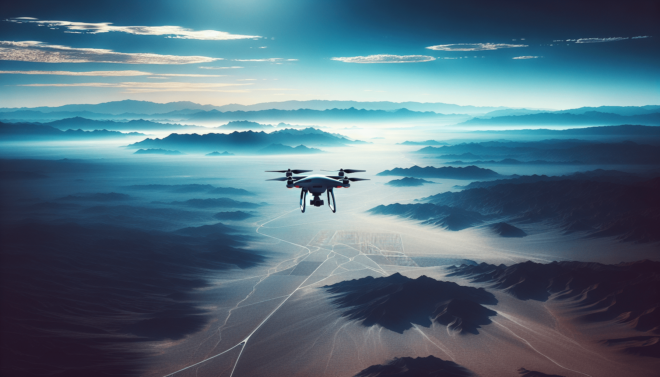Have you ever wondered if there are specific zones in the Las Vegas desert where drones are allowed to fly freely? As drone enthusiasts seek out captivating landscapes for aerial photography or just the sheer joy of flying, understanding the rules and restrictions becomes essential. Especially in places like Las Vegas, where the bustling city is surrounded by expansive desert landscapes, knowing where you can and cannot fly your drone is crucial to ensuring a fun and legal flight.
Understanding Drone Regulations in the Las Vegas Desert
Before launching your drone into the clear desert skies of Las Vegas, it’s important to grasp the regulatory framework that governs drone operations. As drones have surged in popularity, so too have regulations aimed at ensuring their safe use. In the United States, drone operations are largely regulated by the Federal Aviation Administration (FAA), but local rules can also apply, especially in unique regions like the Las Vegas desert.
FAA Regulations for Recreational and Commercial Use
At the federal level, the FAA establishes guidelines for both recreational and commercial drone use. If you’re flying for fun, you need to adhere to the guidelines established under the FAA’s Exception for Recreational Flyers. This includes flying below 400 feet, maintaining visual line of sight, and avoiding prohibited airspace, among other rules. On the other hand, commercial drone operators must comply with Part 107 regulations, which include obtaining a Remote Pilot Certificate.
Local Rules and Their Importance
In addition to federal regulations, you must also be mindful of any local restrictions. Las Vegas, known for its dynamic cityscapes and vast desert landscapes, presents unique challenges and opportunities for drone flyers. Local laws may address concerns specific to the area’s geography and population density. Ignoring these local ordinances could result in fines or other penalties, so it’s wise to understand them thoroughly before taking flight.
Identifying Drone-Friendly Zones in the Las Vegas Desert
The Las Vegas desert offers a breathtaking backdrop for aerial photography and drone exploration. However, not all areas are open to drone activity. Identifying drone-friendly zones will help you make the most of your experience without running afoul of the law.
Popular Zones Open to Drones
While Las Vegas itself has restrictions due to its proximity to McCarran International Airport and other sensitive locations, there are areas in the surrounding desert where drone flying is permitted. For example, some spots in Red Rock Canyon National Conservation Area might allow drones, though it’s critical to verify current regulations as they can change. Checking in with local authorities or visitor centers before flying is always a good idea.
Restricted Areas to Avoid
Certain zones around Las Vegas are strictly off-limits for drone flying. This includes areas near airports, military bases, and national parks like the Grand Canyon, which has a blanket no-drone policy. Additionally, urban centers with high population density often have tighter restrictions to protect the safety and privacy of residents and visitors.
Steps to Ensure Legal and Safe Drone Flying
Flying a drone responsibly in the Las Vegas desert isn’t just about following the rules; it’s also about ensuring safety and respect for the environment and others. Here are some steps you can take to make sure your drone flying is both legal and safe.
Research Before You Fly
Do your homework before taking off. This includes checking both federal and local regulations for the area you plan to fly in. Websites like the FAA’s DroneZone and the B4UFLY app are excellent resources for up-to-date information on airspace restrictions.
Respect Wildlife and Nature
The Las Vegas desert is home to fragile ecosystems and wildlife that can be disturbed by drones. Always keep your drone at a respectful distance from animals and avoid flying in areas known to disturb local flora and fauna.
Engage With the Drone Community
Engaging with local drone communities can provide valuable insights and tips about the best spots to fly legally. These networks are often aware of the latest changes in local regulations and can help newcomers understand the nuances of flying in specific areas.
Navigating Challenges and Ensuring Compliance
While the thrill of capturing the perfect aerial shot can be exhilarating, it’s important to remember that legal compliance should never be compromised. Navigating the challenges of flying drones in the Las Vegas desert requires diligence and awareness.
Understanding Airspace Classes
Understanding the different classes of airspace is critical when flying drones. The Las Vegas area includes several types of airspace, each with its own set of rules. For example, Class B airspace, which covers a portion of the area around McCarran International Airport, is more restrictive than Class G airspace, where drones typically have more freedom.
Securing Necessary Permissions
If you intend to fly in an area where permission is required, ensure that you secure all necessary approvals well in advance. Whether it’s obtaining a waiver from the FAA or getting authorization from a private landowner, having the appropriate permissions in hand will help prevent issues during your flight.
Conclusion
Flying a drone in the Las Vegas desert can offer a unique and exhilarating experience full of stunning vistas and vibrant landscapes. However, understanding and adhering to both federal and local regulations are crucial to ensuring a safe and lawful flight. By researching regulations, identifying drone-friendly zones, respecting nature, and staying engaged with local drone communities, you can enjoy all that drone flying in Las Vegas has to offer without incident. And remember, safe flying not only protects you but also ensures the safety and enjoyment of all who share the airspace with you.

